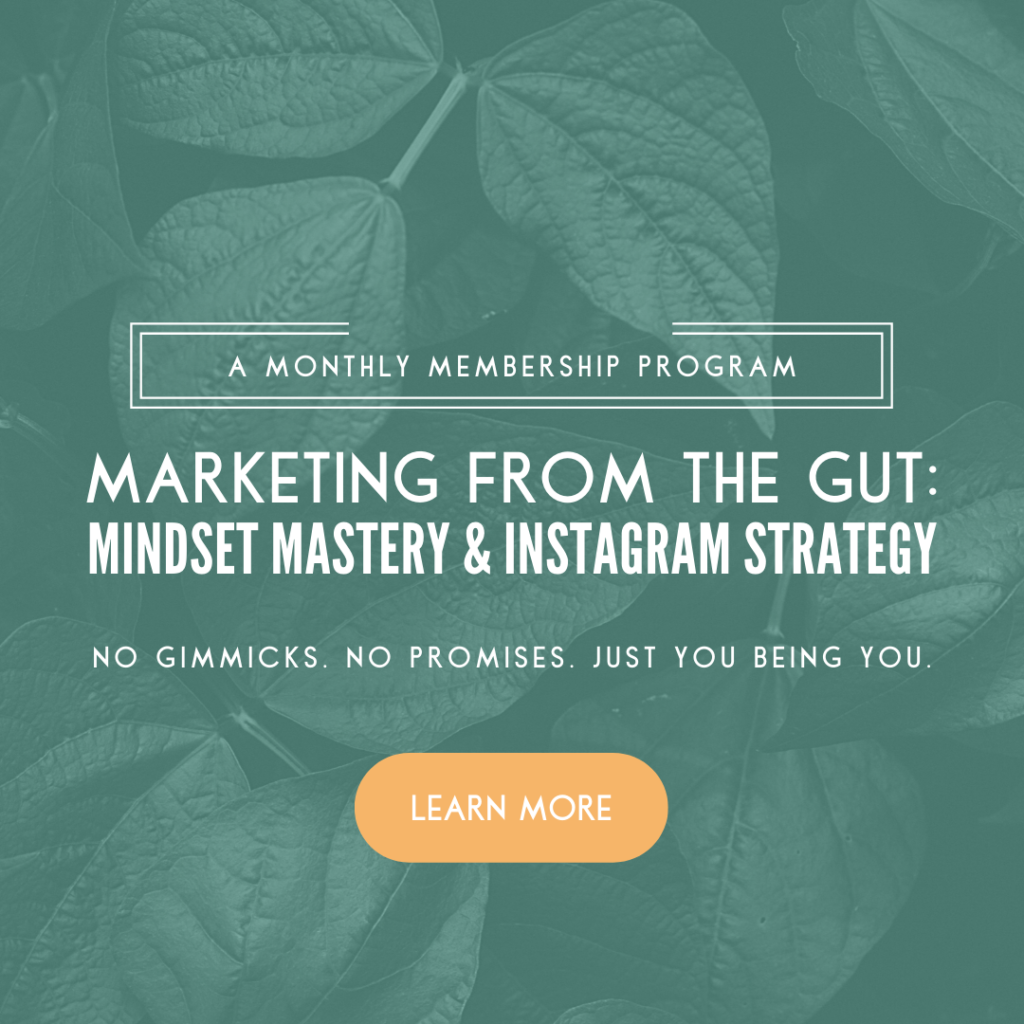If you don’t tell your story, how can potential clients connect with you? The secret ingredient in selling your coaching services is YOU. As Thibaud Clement, Co-Founder and CEO at Loomly says, storytelling frames your brand in a way that aligns with:
- Your purpose
- Your customer’s worldview
That’s why powerful storytelling will help you attract and engage your target coaching clients. More importantly, it will help you convert clients .Tiffany K. Schreane, long-time marketing, advertising branding professional, explains in an article for AMA.org:
“Consistency and authenticity sell. Consumers are loyal and your brand has the potential to reach more of your target when they feel familiarity and a sense of reliability.”
Your unique and personal story will position you as an authority in your space while showing your vulnerability and acting as a testimonial for the transformative journey that your coaching program provides. All of this encourages that conversion-driving connection.
For example, if you want to help millennial women understand and build wealth, they need to understand your backstory with finances so they can relate to you and better understand your purpose and why you feel so passionate about what you do.
Use this guide to tell your story on social media, in email marketing and on your website—and start converting more coaching clients.
Tell Your Story on Instagram: Instagram Caption Checklist for Impact-Driven Female Entrepreneurs
Tell a Great Story
Storytelling doesn’t come naturally to everyone—but that doesn’t mean you can’t perfect it. As American novelist Richard Bausch says, “A good story needs only a good storyteller.” The good news is, there are just a few simple things you need to do to become a great storyteller, including:
- Don’t hold back. Be vulnerable and share the hard stuff.
- Share your lessons. Tell your story, but don’t forget to pull out the insights and lessons.
- Show the evolution. All your stories need to have a beginning, middle and end.
- Be relatable. You know your target client better than anyone else. Make sure your stories are relatable to them, which drives the connection that leads to a sale.
- Practice. Tell stories on social media regularly so you can slowly refine the overall story on your website, blog, etc.
Get Your Story In Front of Potential Clients
You need to bring storytelling into every element of your marketing and brand. The easiest places to tell your story are your social media channels. Because your story is always evolving, you can continually share updates, lessons and insights through video, images, and captions.
However, don’t overlook the importance of storytelling on your website. As your digital storefront, it’s critical that you give visitors something to connect with right away. Start with your about page—does this tell your story or just repeat what they can find on your LinkedIn? Go deeper; bring in your values and your WHY.
With in-depth stories, expand on your blog and then promote a teaser on social media to drive clicks to your site. Depending on your bandwidth and resources, you can also explore starting a vlog series, hosted on YouTube or your site, or a podcast. I started my podcast, Mindset Reset Radio, as a way to share my insights and stories, while giving my guests a platform to do the same!
The key is to weave your story into your messaging wherever customers can find you.
Understand the Key Elements of Your Story (Then Relate Them to Your Brand)
To make your story more cohesive and strategic, break it down into key elements. These categories can serve as themes to refer back to when creating marketing materials or coming up with content for your social media posts. Here are a few examples of key story elements:
- Overcoming trauma: Traumatic events might be difficult to share, but moving past hardships is a critical element in your journey. These vents will also resonate with clients who have gone through similar challenges, driving that connection that you want to nurture.
- Catalyst for change: Your “aha!” moment, or your breaking point, is what led you to make a change, whether that was to leave your job and start a business or walk away from a toxic relationship to heal yourself. Talk about the catalyst for your change to help others recognize when it’s time for them to make a change too.
- Starting your business: Coaching others is all about helping clients create the future they see for themselves. As a business coach, stories around how you started your business can be a strong theme. Potential clients who are stuck at the drawing can see themselves in your story and may be more compelled to reach out.
- Lessons learned: Share the mistakes you made and failures you experienced—both personal and professional. Think about the events that hurt like hell, but where you learned and grew the most, and tell those stories.
- Triggers: What upsets, derails, or stops you from making progress? We all have triggers and sharing yours can be a powerful element of your story.
- Breakthroughs: These are the smaller moments that lead to change. These discoveries generally come from your lessons learned, but the stories you’ll tell can describe the action taken and what happened on the other side. Check out one of my Instagram posts that outlines a recent breakthrough.
Your goal should be to use these elements of your story to further your brand and show clients that you both walk the walk and talk the talk. Don’t forget to always bring the story full circle and explain how these relate to your coaching program and the value that you can share with others because of these experiences.
Follow the 80/20 Rule
When you tell your story to attract coaching clients, you need to share personal anecdotes but also relate it back to your coaching program to convert them to leads. The hardest part is not being too overly-promotional. We’ve all seen those pushy, salesy coaches on social media that are constantly hard pitching their program. That doesn’t need to be you. People will buy your coaching because of YOU. You don’t need to have a CTA to sign up in every post to remind them.
To be more authentic with your storytelling, follow the 80/20 rule. Make sure 80 percent of your stories are non-promotional, with 20 percent being promotional. Here’s what this means:
- Non-promotional content: Tells a story and shares insights, and ends with a CTA for your followers to share, comment or save the post for later.
- Promotional content: Tells a story and shares insights, and ends with a CTA to sign up for your program, read your blog post, visit your website, etc.
When done right, the non-promotional posts may lead to better results. I love the way Melanie Deziel, StoryFuel founder, explains this: “It’s not our job to tell the audience what to think or how to feel or what to do, but to paint a picture. Give them enough information so they can make those choices on their own.”
While this may seem counterintuitive to selling, Deziel explains that if you can make people feel something, which allows them to form their own opinion, their opinion will be much stronger.
Share More Vulnerable Stories on Social Media
Coaching is personal and vulnerable, for you and your client. That’s why your storytelling needs to be honest, vulnerable, and real. Authenticity will help you attract and keep the attention of your ideal clients on busy platforms like Facebook and Instagram.
This authenticity is critical for conversions. SproutSocial found that 64 percent of consumers want brands that they can connect with. What’s more, a study from Stackla found that 90 percent of consumers say authenticity is important when deciding what brands to support.
How can you be most authentic and real? Tell the whole truth. When exploring your key elements, explain your entire journey with all the messy details. Don’t sugar coat your experiences or failures. Your clients want to know you as a real person who overcame relatable issues.
Use your images and captions to capture your true emotions. Social media users are savvy. They know the difference between dull, generic, and boring captions versus genuine storytelling. Check out my Instagram post below where I got super real. It’s scary and vulnerable to share your whole self, but it will attract more people into your community who you can then convert into clients.
Leverage Your Storytelling to Attract More Coaching Clients
You, and your story, is what will sell your coaching, so don’t leave this important element out. Tell your story on social media, your website, email marketing—wherever you connect with potential clients—so they can connect with you on a deeper level, which leads to more conversions.




